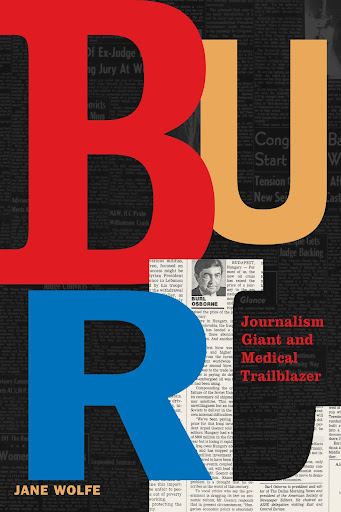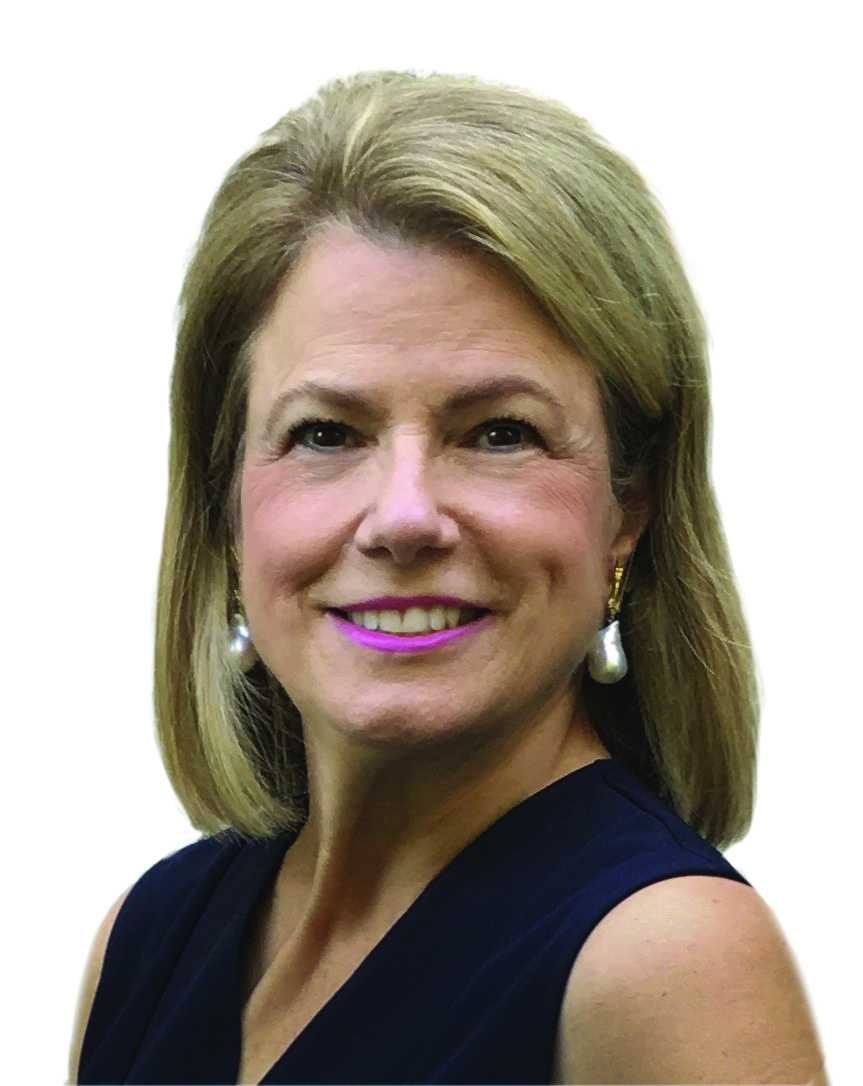 COLUMBUS, Ohio – Best-selling biographer Jane Wolfe’s latest – “Burl: Journalism Giant and Medical Trailblazer” (Sept. 6, 2022, Andrews McMeel Publishing) – looks at legendary journalist Burl Osborne’s extraordinary life and career.
COLUMBUS, Ohio – Best-selling biographer Jane Wolfe’s latest – “Burl: Journalism Giant and Medical Trailblazer” (Sept. 6, 2022, Andrews McMeel Publishing) – looks at legendary journalist Burl Osborne’s extraordinary life and career.
“Burl” is the story of one man’s unlikely rise from the coal mines of Appalachia to the pinnacle of journalism. After being diagnosed with a fatal kidney disease as a child, Burl Osborne pioneered home dialysis treatment and became only the 130th person to undergo a live kidney transplant in 1966—then an unproven, high-risk operation.
While managing his challenging illness, Burl distinguished himself early as a writer and reporter with The Associated Press, eventually rising to the top of the wire service’s executive ranks. Then, against the advice of his colleagues and the newspaper’s own doctors, he sought an even greater challenge: joining The Dallas Morning News to lead the fight in one of America’s last great newspaper wars.
Throughout his life and career, he garnered respect from business and political leaders, reporters, editors, and publishers around the country. “Burl” thrusts readers into the improbable and remarkable life of a man at the forefront of both medicine and a golden age of journalism.
“Burl: Journalism Giant and Medical Trailblazer”
Jane Wolfe | Sept. 6, 2022 | Andrews McMeel Publishing | Biography
Hardcover | ISBN 978-1524871796 | $29.99
Audiobook also available
 About the Author
About the Author
Jane Wolfe is the author of two previous best-selling biographies, “The Murchisons: The Rise and Fall of a Texas Dynasty” (St. Martin’s Press) and “Blood Rich: When Oil Billions, High Fashion, and Royal Intimacies Are Not Enough” (Little, Brown & Co.). She is also a freelance writer for several publications, including the New York Times and Town & Country magazine. Although she lived in Dallas from 1980 until 2019, she now resides in the city where she was born, Columbus, Ohio, and where her family for more than a century owned The Columbus Dispatch.
“Burl Osborne was a man of talent, determination, and courage against obstacles. All those qualities are reflected in this book. He was a friend and valued colleague—a man I admired.” – Walter R. Mears, Associated Press reporter for 45 years and Pulitzer Prize-winning journalist
“Burl was wildly unique…I’ve never met anyone in the media business like him. He was the real deal.” – Morton H. Meyerson, former executive of Electronic Data Systems and current chairman of 2M Companies, Inc
“Today, more than ever, America needs more Burl Osbornes…tough, demanding but compassionate, a fighter, a competitor, and a newsman committed to reporting the news in a balanced, honest, and fair manner.” – Dolph C. Simons, Jr., editor of The Lawrence Journal-World and chairman of the World Company
“Burl served on the board of CPJ for 15 years…[He] had an uncanny ability to identify the key issues, ask the relevant questions, and build a consensus around an informed decision. It was a marvel to watch him work…His service contributed enormously to…the defense of persecuted journalists around the world seeking to bring the truth to light.” – Joel Simon, executive director of the Committee to Protect Journalists
In an interview, Jane Wolfe can discuss:
- Burl Osborne’s legacy and impact on the journalism industry
- What today’s journalists can learn from Burl’s life and career
- Significant historical moments that Burl witnessed through the unique lens of a reporter and editor
- Burl’s role in leading the Dallas Morning News and its newspaper war against the Dallas Times Herald
- The lesser-known influence Burl had on the medical community – He was told as a young child that he wouldn’t live past his teenage years and became the 130th person in history to receive a life-saving kidney transplant
An Interview with Jane Wolfe
The news industry has a lot of legends — why did you choose to write about Burl Osborne? What sets him apart?
Burl is that rare publisher and editor for whom integrity and fairness were his guiding principles. He learned early on – as a TV news reporter at the very start of his career – that if he was neither too far left nor too far right, and if he played his stories straight down the middle, he would not only be more credible but also have more success as a journalist. It was an early lesson in fairness from a journalism teacher he respected – and he never forgot it.
I was impressed by his extraordinary drive and energy, which were especially remarkable given his kidney problems. After his early kidney transplant, with just one working kidney, he rose quickly up the ladder with the Associated Press, causing one reporter to quip, “Imagine what he could do with two kidneys!”
Can you elaborate on the newspaper war between the Dallas Morning News and Dallas Times Herald – and what role Burl played in that fight?
Burl didn’t just play a role in that fight. He was the fight. Without Burl, it is quite likely that the Dallas Morning News would not have won the newspaper war. The Dallas Times Herald was ahead when the war began and had much deeper pockets than The Morning News.
But Burl’s intelligence, creativity, hard work and determination made The News a better product, and when he got ahead in the fight he never backed off. He pushed ahead, determined not to let up, until the day the Times Herald closed.
Burl’s reputation in journalism is well-documented, but the book also tells of his remarkable and unlikely rise. Can you give us a brief glimpse into his childhood?
He had a rather sad childhood because 1) his family was just barely middle class and he had to do without some things; and 2) he was sick for much of it, battling kidney disease. He was still a young boy when he was diagnosed by a doctor who gave him a devastating prognosis. The doctor told him not to exert himself in any way and to spend most of his time in bed. He also told Burl that he probably wouldn’t live beyond his teenage years. But the doctor did not give him much information about his disease, so he went alone to the library to read about it. It was not a very hopeful time for the young boy.
Did anything surprise you when looking into Burl’s life and career?
Many things surprised me. He was very smart, but subjected his body to great danger. After his first kidney transplant, his surgeon in Denver warned him to stay off of the ski slopes because the massive amount of steroids he was taking made his bones brittle. A fall on the slopes would likely mean one or more broken bones. Burl ignored the surgeon’s advice and skied fast and often.
He also took chances driving too fast. When he was still in high school, he was lucky to walk away from a car that he totaled in a very bad accident. Later, when he owned a Ferrari, he raced it at over 120 miles an hour on freeways around Dallas and at least once nearly crashed into another car.
How did you go about researching this book?
The same way I’ve researched all of my books, with many interviews. I spoke at length with several members of Burl’s family, and with his friends, competitors, acquaintances, admirers. I also researched a great deal of news stories online, as there are many articles not only written about him but also by him.
While interviewing Burl’s former friends and colleagues, did any stories stand out or stay with you more than others?
His first wife, Louella, told me in fascinating detail how she and Burl struggled to operate one of the earliest home dialysis machines. I was amazed to learn from her how the two of them used a very rudimentary machine – that at any moment could have killed him – to remove, clean and restore his blood to his body. I describe in the book the very difficult and tense times they had with the machine that regularly broke down and that often made him feel even sicker.
Burl had a long, successful career in journalism. What significant moments in history did he witness through the lens as a reporter and editor?
A better question would be, “What didn’t he witness through the lens as a reporter and editor?” He was there for all of the big news events of the second half of the 20th Century in America.
However, he missed Dallas’ biggest news story — the Kennedy assassination — by almost two decades. But he showed the newspaper world how he might have handled that assassination when he put out an “Extra” when President Ronald Reagan was shot in March 1981, soon after Burl arrived in Dallas. The “Extra” alerted journalists in Dallas that a new editor had arrived in town and that things would never be the same.
What lessons can the next generation of journalists learn from Burl’s life and career?
We’re often told that good guys finish last. But Burl proves that’s a myth. He was as well-liked when he finished first – as head of The Morning News and head of the Associated Press – as he was when he was starting out as a cub reporter. A journalist who wants to make a name for herself or himself today can do this by working hard to get the story right, not by sensationalizing it or giving it a personal bent to benefit himself or herself. Burl was always balanced, whether writing about a mine collapse in Kentucky or managing a Pulitzer-Prize winning newspaper series in Texas.
How does this book appeal to non-journalists?
It’s a great American success story! It appeals to anyone who likes to read about an individual who starts with nothing and rises to the top. Burl succeeded because he was highly intelligent, hard-working and a natural leader. He had a nose for news and he was a talented writer so, naturally, he excelled as a journalist. But he would have reached the top in whatever profession he chose, whether it be banking or law or manufacturing or something else. At the end of the book, you’re glad he won.

A former award-winning journalist with national exposure, Marissa now oversees the day-to-day operation of the Books Forward author branding and book marketing firm, along with our indie publishing support sister company Books Fluent.
Born and bred in Louisiana, currently living in New Orleans, she has lived and developed a strong base for our company and authors in Chicago and Nashville. Her journalism work has appeared in USA Today, National Geographic and other major publications. She is now interviewed by media on best practices for book marketing.

